
by Contributed | Apr 6, 2023 | Business, Microsoft 365, Technology
This article is contributed. See the original author and article here.
From the home office to the boardroom to the frontline, how we work continues to change and evolve. There’s more permanence in the flexibility people have come to expect in how they work.
The post Windows 365 offers flexibility from the office or home to the frontline appeared first on Microsoft 365 Blog.
Brought to you by Dr. Ware, Microsoft Office 365 Silver Partner, Charleston SC.
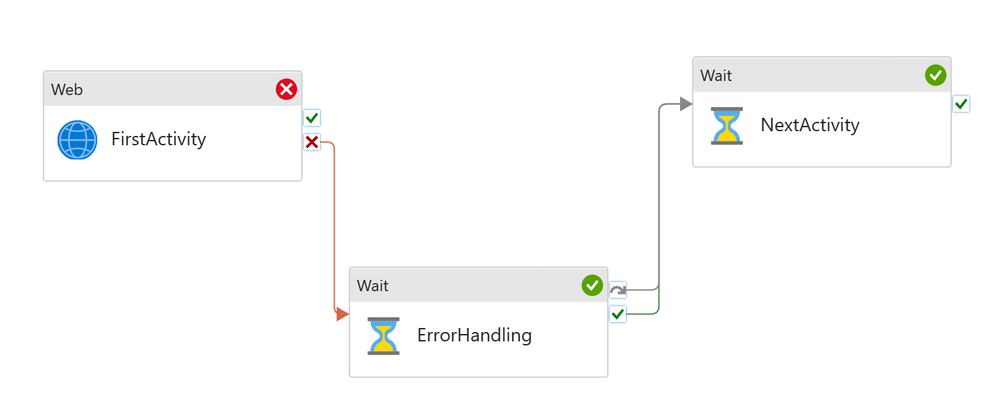
by Contributed | Apr 5, 2023 | Technology
This article is contributed. See the original author and article here.
Series Overview
Orchestration allows conditional logic and enables users to take different paths based upon outcomes of a previous activity. Building upon the concepts of conditional paths, ADF and Synapse Pipelines allow users to build versatile and resilient workflows that can handle unexpected errors that work smoothly in auto-pilot mode.
This is an ongoing series that gradually levels up and helps you build even more complicated logic to handle more scenarios. We will walk through examples for some common use cases, and help you to build functional and useful workflows.
Please review the first installment in the series: Part 1: Error Handling and Best Effort Step and Part 2: OR
Error Handling and Try Catch
Error handling is a very common scenario in data engineering pipelines. From time to time, activities will fail, but we don’t want to fail the whole pipeline due to a single activity failure.
We call this logic: Try-Catch, and we have streamlined the implementation for this common use case.

- Add first activity
Add error handling to the UponFailure path
- Add second activity, but don’t connect to the first activity
Connect both UponFailure and UponSkip paths from the error handling activity to the second activity.
To learn more, read Pipeline failure and error message – Azure Data Factory | Microsoft Learn.
We hope that you have found this blog to be helpful! If you have any questions or feedback, please post them in the comments below.
by Contributed | Apr 4, 2023 | Technology
This article is contributed. See the original author and article here.
To increase our developer experience landscape and to allow customers to interact and extend Microsoft Purview functionality using software technologies and tools in their organization, we are happy to announce that REST APIs and SDKs for workflow data plane in public preview. Software engineers or developers in your organization can now leverage these APIs/SDKs to programmatically create or update a workflow, submit a workflow, approve or reject an action, update or re-assign an approval or task action, list or cancel workflow runs, and more.
In order to use any Microsoft Purview data plane APIs you need to first create a service principal and assign it to the right Microsoft Purview role before invoking the APIs. This is needed to establish trust between the service principal and the Microsoft Purview account. For example, to create a new self-service data access request workflow and bind the same to root collection, you need to provide ‘Workflow Admin’ role to the service principal at the root collection level.
This tutorial covers details on how to create service principal, set up authentication using the service principal, get token and use the token to call Microsoft Purview data plane APIs.
To get started with workflow data plane APIs and SDK’s please see the below links:
- Workflow data plane APIs, see here.
- Workflow data plane C# SDK, see here.
- Workflow data plane Java SDK, see here.
- Workflow data plane Python SDK, see here.
- Workflow data plane Java script SDK, see here.

by Contributed | Apr 4, 2023 | Dynamics 365, Microsoft 365, Technology
This article is contributed. See the original author and article here.
Today we launched 2023 release wave 1 for Microsoft Dynamics 365 and Microsoft Power Platform, a rollout of new features and enhanced capabilities slated for release between April and September 2023.
The updates include Copilot for Dynamics 365 and Copilot for Microsoft Power Platform, bringing the power of next-generation AI capabilities and natural language processing to business processes. Release wave 1 also introduces hundreds of new and updated user experiences to collaboratively solve challenges, streamline workflows, and help individuals and teams focus on what matters most.
The 2023 Microsoft Business Applications Launch Event, available to view on demand, is a great way to get up to speed on the release wave and learn how organizations are already using these capabilities to transform end-to-end business processes today.
Some of the major themes that we’re excited to highlight include:
- Enhancing end-to-end customer experiences with AI and Dynamics 365 Copilot.
- Modernizing every link across supply chain and operations.
- New ways to accelerate development with Microsoft Power Platform.
Enhancing end-to-end customer experiences with AI
Release wave 1 supercharges end-to-end customer experiences while improving collaboration and information sharing across the organization. New capabilities provide more insight into audiences’ needs, and more ways to engage customers with personalized content and conversations at scale. AI takes center stage in this release wave, with new Dynamics 365 Copilot capabilities that help to streamline processesfrom audience research to content development.
For example, automaker Lynk & Co. is attracting new customers to its innovative, membership-based approach to car ownership by using new AI capabilities in Dynamics 365, as well as enhancements to build relationships with the right audience. Learn more in this fireside chat with Lynk & Co by visiting the bonus content during the Microsoft Business Applications Launch Event.
Dynamics 365 Customer Insights will enable marketers at organizations like Lynk & Co. to use natural language capabilities in Copilot to query, group, and measure their customer data, allowing them to discover hidden patterns. Marketers can quickly identify the best audience for upcoming events and create a segment directly from the results.
In addition, users can see all Customer Insights activities in the unified activity timeline in Dynamics 365 Sales, Customer Service, and Marketing. Valuable data from Customer Insights can be embedded directly within the Contact, Account, and Lead forms within Dynamics 365 Sales, giving sellers a more complete picture of their customer in the flow of work.
Explore the release plans for Dynamics 365 Customer Insights.
Dynamics 365 Marketing delivers Copilot capabilities to help marketers learn more about their customers, create targeted customer segments, and generate personalized content. We’ve enhanced the query assist feature with generative AI capabilities, enabling marketers to accurately target customers using conversational, everyday language to quickly build targeted segments. Content ideas helps to find inspiration and provide a starting point for copy when composing emails for audiences.
We’ve also made it easier to add lead capture forms to a website. With the new intuitive forms experience in real-time marketing, you can easily create modern forms with advanced capabilities without depending on developers. Also, marketers can use out-of-the-box dashboards to track pipeline development and analyze the impact and contribution of journeys, marketing messages, and content at different stages of the business process.
Explore the release plans for Dynamics 365 Marketing.
Dynamics 365 Sales delivers enhancements to streamline seller tasks and improve effectiveness. Rather than manually tracking next steps, Dynamics 365 Sales helps sellers to automate the creation of follow-up tasks. This saves valuable time to focus on higher-priority items and avoid tasks from falling through the cracks. Copilot in Dynamics 365 Sales creates email content for faster customer replies and AI-generated meeting follow-ups that compile discussed topics.
In addition, updates include a new manager insights dashboard for conversation intelligence, as well as extended support for conversation intelligence with calls made through third-party telephony providers. This gives sellers a seamless experience irrespective of the call provider they are using.
See the release plans for Dynamics 365 Sales and Microsoft Viva Sales.
Release wave 1 updates for Dynamics 365 Customer Service include enhanced case creation, channel-based swarming with Microsoft Teams, and robust real-time analytics with customization, in addition to availability of the voice channel in more regions.
Organizations like MVP Health Carea nationally-recognized regional not-for-profit health plan providerwill soon use Copilot in Dynamics 365 Customer Service to provide agents with real-time AI-powered assistance, helping them to resolve issues faster, handle cases more efficiently, and automate time-consuming tasks so they can focus on delivering high-quality service to their customers.
Explore the release plans for Dynamics 365 Customer Service.
Modernize every link across supply chain and operations
Updates to Dynamics 365 Supply Chain Management deliver increased agility and resilience across the supply chain. By applying appropriate valuation methods and selected currencies, you can now account inventoriesinventory and work in progress (WIP)in multiple representations, to help comply with local generally accepted accounting principles (GAAP), internal management accounting, and International Financial Reporting Standards (IFRS) principles.
A new Asset Management mobile app helps ensure smooth operation of production equipment. From one app, your team can create new maintenance requests, track and update work orders, and access key information. Updates to the Warehouse Management mobile app include a new version for iOS devices and features to speed the packing process, such as optimized screen layouts with more prominent product images to help workers more quickly identify items.
Dynamics 365 Intelligent Order Management is officially included in Microsoft Supply Chain Center, helping to provide faster, more reliable delivery times. Updates include the ability to create a purchase order from a sales order and check order status updates without switching to Dynamics 365 Supply Chain Management, as well as new purchase orders for business-to-business (B2B) capabilities. At the launch event, we demonstrate new capabilities that help organizations like Northern Tool + Equipmenta manufacturing and omnichannel retail business with 130 stores across the United Statesto experience faster, more reliable delivery times, so their customers get the tools and supplies they need exactly when they expect.
See the release plans for Dynamics 365 Supply Chain Management, Intelligent Order Management, and the Microsoft Supply Chain Center.
Dynamics 365 Finance and Project Operations
In this wave of updates, we’re helping finance organizations adapt faster, work smarter, and drive business performance with features and enhancements focused on the three As of rapid finance-first innovation.
Organizations like The Robert Walters Group, a specialist recruitment agency operating in 31 countries, can now use our newly generally available Expense mobile app. The release wave 1 updates also include expense itemization and the ability to capture receipts using optical character recognition (OCR), enter per diems, and log mileage.
Enhancements for Dynamics 365 Finance include further automation of complex tax scenarios and full end-to-end automation of accounts payable and ledger settlements, helping finance professionals to expedite the close and spend more time focusing on value-added activities.
See the release plans for Dynamics 365 Finance, Project Operations, and Human Resources.
Accelerate development with Power Platform
Microsoft Power Platformour comprehensive and intelligent low-code platformenables users and organizations to create innovative apps, bots, and automations seamlessly. In our launch event, we explore how customers like Pacific Gas and Electric (PG&E) use Microsoft Power Platform to automate and eliminate redundant and manual processes throughout their organization.
This release wave builds on our commitment to create tools and experiences that add value to every role by breaking down silos between data, insights, and people. The union of AI and low-code will revolutionize the way solutions are built and fundamentally transform the way people work, collaborate, and create.
With Power Apps, we continue to support the scaling of organizations by empowering makers and developers of all skill levels to be more productive and to build apps, and manage data and logic. We are helping organizations reduce risk with advanced governance capabilities, such as automated tests for custom pages and model-driven apps, enabling customers to further benefit from modernization of web and mobile experiences ensuring modern and fast experiences across apps.
See the release plans for Power Apps.
Power Pages supports low-code and no-code makers, as well as professional developers, with more out-of-the-box capabilities, like new solution-based application life cycle management and migration of website configurations from one environment to another. With virtual tables and cloud flow integration, Power Pages can now connect seamlessly to your external data and service and enable both low-code makers and pro developers to build amazing user experiences.
Explore what’s new for Power Pages.
Power Automate is reimagining the process of creating flows with natural language authoring capabilities that allow you to simply describe the flow you want to create. It has never been easier for new users to start creating and authoring flows. Other improvements include introducing work queues where automatable tasks can be viewed and managed together, as well as providing streamlined connectivity to a machine for desktop flows, which eliminates the need for additional installs and password management. Lastly, we’re making it easier for organizations to contextualize the impact of their technical investments with ROI performance tracking capabilities in Power Automate desktop flows, which helps organizations invest in the most valuable automation efforts.
Explore what’s new for Power Automate.
Power Virtual Agents is the Microsoft single conversational AI studio and unified authoring canvas for all bot-building needs. We’re making it easier for developers and makers to build bots with Copilot in Power Virtual Agents, greatly accelerating bot development via natural language authoring. Developers can then extend their bots to handle more complex workloads with Microsoft Bot Framework and Microsoft Azure Cognitive Services capabilities in Power Virtual Agents.
Explore what’s new for Power Virtual Agents.
Power BI infuses AI-driven insights into everywhere that people get work done. For Teams, we’re bringing enhancements to meetings and multitasking to help users work with their data wherever they may be. And, for individuals, we’re enhancing the creation experience, bringing more parity on the web, and adding the Power Query diagram view into Power BI.
Explore the release plans for Power BI.
Watch the virtual Microsoft Business Applications Launch Event
We encourage you to watch the launch event on demand for more details and demos of new capabilities across Dynamics 365 and Microsoft Power Platform. In addition, you can explore several special topic presentations covering Microsoft Dynamics 365 Business Central, Physical Operations, and our AI transformation journey in business applications.
Be sure to explore the detailed release plans for Dynamics 365 and Microsoft Power Platform, and keep track of what’s new and upcoming, as well as create a personalized release plan, in the release planner.
Release planner
Explore Dynamics 365 and Microsoft Power Platform features coming soon or available to try now.
The post Release wave 1 expands agility, automation, and innovation across Microsoft Dynamics 365 and Power Platform appeared first on Microsoft Dynamics 365 Blog.
Brought to you by Dr. Ware, Microsoft Office 365 Silver Partner, Charleston SC.

by Contributed | Apr 4, 2023 | Dynamics 365, Microsoft 365, Technology
This article is contributed. See the original author and article here.
We are excited to announce the launch of the Dynamics 365 Implementation Portal. The implementation portal is a self-serve tool that helps Dynamics 365 customers and partners manage their project data, users, and reviews. It also provides access to tailored implementation guidance to help ensure a successful cloud deployment.
- Manage project data: Manage project data and users, profile projects by selecting the relevant Dynamics 365 products and features, and define other project characteristics.
- Execute project reviews: Identify potential risks, mitigation recommendations, and other best practices based on the Success by Design framework to support a successful go-live.
- Access tailored guidance: Access tailored implementation guidance, including feature and product documentation, TechTalks, training materials, and case studies.
The implementation portal is based on Success by Design, a systematic approach for successful cloud deployment that was developed by Microsoft. Success by Design provides prescriptive guidance for designing, building, and deploying your new Dynamics 365 solution.
Eligible customers may also collaborate with Microsoft FastTrack solution architects. The FastTrack team of product experts can help you validate the architecture of your solution, mitigate risks, and overcome deployment blockers.
The Dynamics 365 Implementation Portal represents a significant step in equipping all Dynamics 365 customers with the necessary resources to go live with confidence.
Next steps
Sign up for the Dynamics 365 Implementation Portal: https://aka.ms/D365ImplementationPortal
Learn more about the implementation portal: https://aka.ms/D365ImplementationPortal-Docs
Not yet a Dynamics 365 customer? Take a tour and get a free trial.
The post Dynamics 365 Implementation Portal now available appeared first on Microsoft Dynamics 365 Blog.
Brought to you by Dr. Ware, Microsoft Office 365 Silver Partner, Charleston SC.
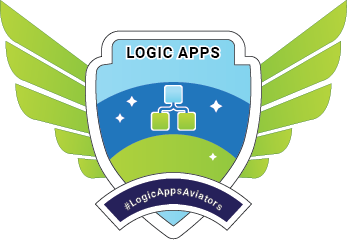
by Contributed | Apr 3, 2023 | Technology
This article is contributed. See the original author and article here.
In this issue:

Welcome to Logic Apps Aviators Newsletter – April 2023, the official monthly newsletter for Microsoft’s Logic Apps Aviators community. Catch up on Microsoft news from us and our community.
News from our product group:
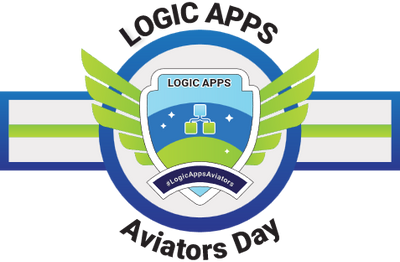
|
Logic Apps Aviators Day
On June 22, 2023 (Pacific Time) the Logic Apps Product Group will host a full day of learning where you will be the start! The Logic Apps Aviators is a free event driven Microsoft, for anyone who wants to learn more about Logic Apps and how it can help to solve real life integration problems. In this full-day event, we will deep-dive into many aspects of Logic Apps with sessions from both Microsoft team and community. And we are looking for sessions of all types, from beginning to advance, from patterns and practices to real life scenarios.
|
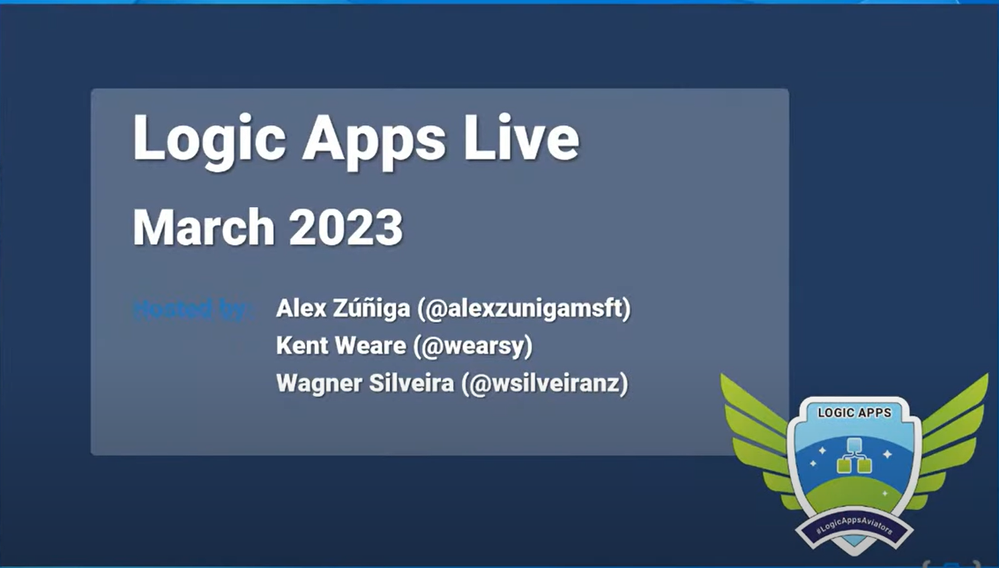 |
Logic Apps Live – Community Standup (March 2023)
In this recording we will discuss the new Application Insights (Preview), IBM Host File (Built-in connector), Logic Apps Designer and Connectors 101 presentation.
|

|
Application Insights Enhancements for Azure Logic Apps (Standard) – Preview
We have recently published an update to how we emit telemetry for Application Insights in Azure Logic Apps (Standard). This new update is currently in Public Preview and is an opt-in feature for customers. It can be enabled without introducing risk to your telemetry. For customers who choose not to opt in, they will continue to emit telemetry using the existing method.
|
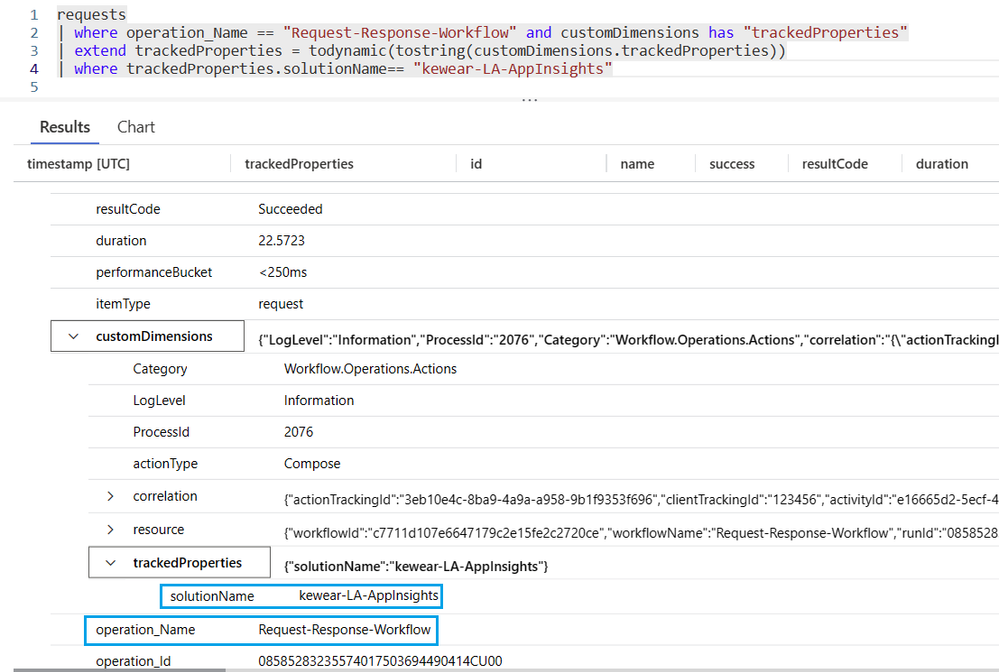
|
Improve Logic Apps (Standard) Workflows Observability with Application Insights
InfoQ.com, a popular technology publication, recently picked up coverage about our Application Insights (Preview).
|
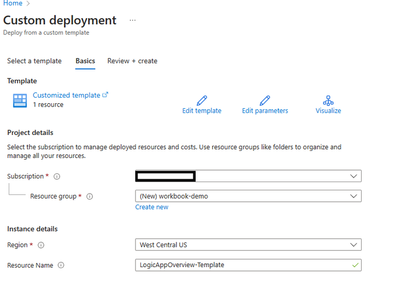
|
Extending Logic Apps App Insight integration with Azure Workbooks
In this blog post we are going to show how we can use Azure workbooks together with recent improvements to application insight integration to build similar rich and interactive dashboards for standard Logic Apps.
|

|
Integrate Azure Open AI in Teams Channel via Logic App
Now in Azure, we can deploy Open AI with chatgpt-35-turbo model as an Azure resource, so this blog introduces how to integrate the Azure Open AI in Teams channel without using a bot.
|
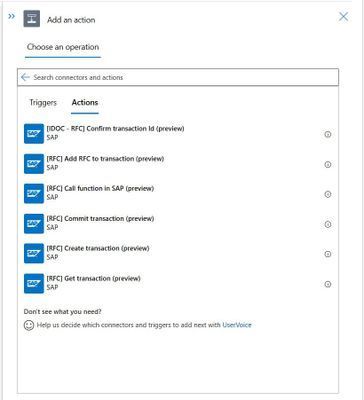
|
Using Logic App Standard to connect to SAP
Learn how to setup SAP connections in Azure Logic Apps (Standard).
|
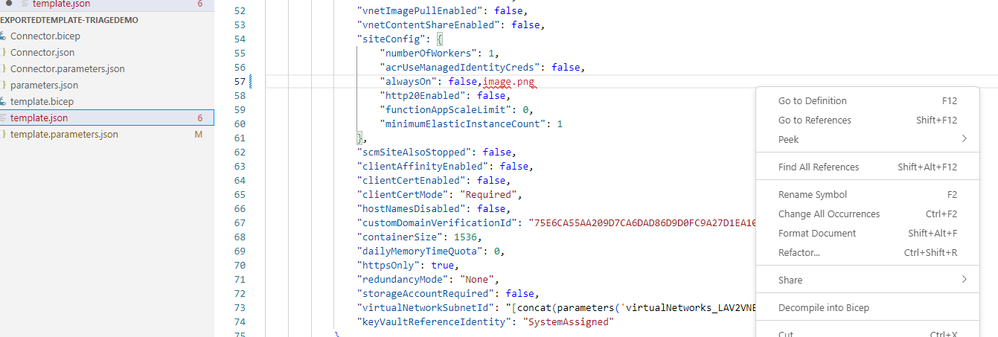 |
Deploying Logic App Standard resource using Bicep templates and DevOps pipeline
In this blog, we will explore the creation of Logic app infrastructure components using Azure Biceps template. Bicep is a domain-specific language (DSL) that uses a declarative syntax to deploy Azure resources. In a Bicep file, you define the infrastructure you want to deploy to Azure, and then use that file throughout the development lifecycle to deploy your infrastructure repeatedly.
|
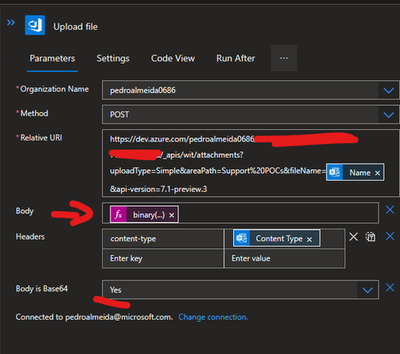
|
Attaching a file to a DevOps Work Item
How to create the actions to Attach a file to a Work Item in DevOps, by using the Azure Connector.
|
News from our community:
Logic Apps and DocuSign integration
Post by Sandro Pereira
DocuSign is used by individuals, businesses, and organizations of all sizes across many industries, including finance, real estate, healthcare, and more. The platform streamlines the document signing process and eliminates the need for physical documents and manual signatures, which can be time-consuming and costly.
Get notified on expiring Intune LOB apps
Post by Peter Klapwijk
Set up a Logic Apps workflow to get notified when an iOS LOB app is about to expire. An expired iOS LOB app can’t be deployed to our users anymore, so we need to make sure the apps are renewed before they expire.
Network Security for Integration Projects
Video by Paul Baars
Paul Baars talks about network security for integration between on-premises systems with the Azure Serverless cloud.
Modernizing Consumption Logic Apps with Bicep Infrastructure as Code (IaC)
Video by Mitchell Abel
Bicep has made creating the resources a lot simpler and less verbose. And the separation of Infrastructure and Code with Logic Apps Standard has made the day-to-day way of working, especially when the integration developer is responsible for their own DevOps, a great deal easier once everything is set up.
Azure Logic Apps: KQL for having an overview of your scheduled workflows
Post by Stefano Demiliani
This post answers some questions Stefano had from customers, including:
- Is it possible to have an overview of all the workflows I have (and their state) across subscriptions?
- Can I know the connectors they’re using?
- For timer-based workflows (recurrencies) can I have an overview of the scheduling?
Remove Azure Logic App Orphan Metric Alerts
Post by Mark Brimble
A quick tip showing how to remove orphan metric alerts from deleted Logic Apps consumption.

by Contributed | Apr 3, 2023 | Business, Forrester Research, Hybrid Work, Microsoft 365, Technology
This article is contributed. See the original author and article here.
Foster more effective communication, connection, and collaboration in your organization. Learn about the value of Microsoft Teams Phone in a new study conducted by Forrester Consulting.
The post 3 ways to improve productivity and reduce costs with Microsoft Teams Phone appeared first on Microsoft 365 Blog.
Brought to you by Dr. Ware, Microsoft Office 365 Silver Partner, Charleston SC.
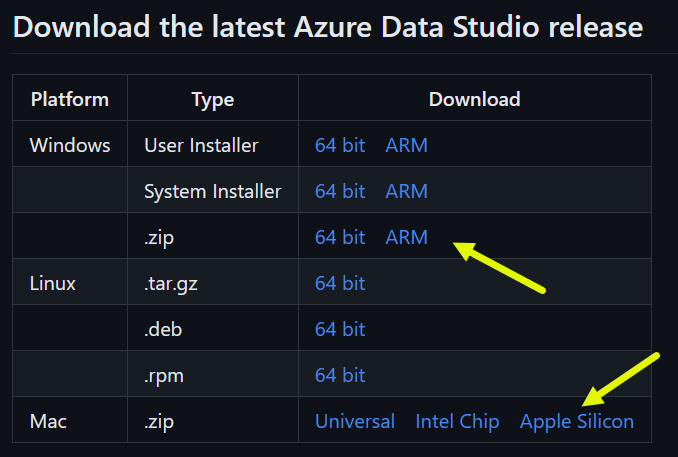
by Contributed | Apr 1, 2023 | Technology
This article is contributed. See the original author and article here.
While many folks observe April 1 as April Fool’s Day, we in the SQL Tools team celebrate April 1 as April Tools Day, a day when we debunk myths surrounding the tools for SQL Server. We recommend having some good chocolate to honor the occasion.
Now, you may wonder how we are aware of the misconceptions that exist for the different tools for SQL Server. Some thoughts we hear from direct conversation, for example at conferences and on social media. But one of the best resources is the comments that folks leave when responding to a survey.
For example, you may have been using Azure Data Studio and had a dialogue pop-up that asked if you would recommend ADS to a friend. While we would love for folks to provide a 9 or 10 when asked, what’s more interesting are the comments shared after selecting a score. We read every. single. comment. that is entered. These replies create a picture of what users find challenging and what they would love to see, and ultimately they help us make the product better. They also reveal misunderstandings that exist about a given tool, which leads to our celebration of April Tools Day.
Myth #1 Azure Data Studio is the only standalone solution now that SSMS is deprecated.
SQL Server Management Studio (SSMS) is not deprecated. We thought about writing that in ALL CAPS, but figured bold is sufficient. SSMS has not been deprecated, and we are not planning on deprecating it. You will see new functionality being added to Azure Data Studio, but we have a fair number of things lined up for SSMS, including migration to the Visual Studio 2022 shell, which brings 64-bit support.
Myth #2 No new work is happening with drivers.
You may have missed the debut of the new sqlcmd (aka go-sqlcmd) a couple weeks ago during the SQLBits conference. This tool is based on the Go driver mssqldb. The new sqlcmd is still in preview, but version 1.0 will GA soon, and in time we expect it to replace the existing sqlcmd while also surpassing it in capabilities. For example, it can be used on Linux and Mac, as well as Windows, can be quickly downloaded or updated, and works for Azure SQL Database and on-prem installations of SQL Server. Once you have it installed, run ‘sqlcmd create mssql’ to create a SQL Server container based on the latest image – it’s that easy. If you want to learn more, check out the documentation or the GitHub repository. (Yep, it’s open source, too.)
Myth #3 The SQL Database Projects extension features are lacking.
We have made significant strides in adding functionality to the Database Projects extension. With GA on the horizon, the extension will sport a new backend and in time will include new features such as moving/renaming files, saving publish profiles, and more. We also will have a brand new Microsoft.SqlServer.DacFx.Projects nuget package that supports programmatically editing SQL projects wherever you want, including CI/CD pipelines!
Myth #4 Azure Data Studio runs slower on Mac and the functionality for the Linux-based version is much less compared to the Windows version.
If you’re using macOS or Windows on a machine with arm64 processors, make sure you are using the native build of Azure Data Studio, highlighted with the yellow arrows in the screenshot below, for optimal performance.
 Azure Data Studio Install Packages
Azure Data Studio Install Packages
In the most recent release, ADS 1.42, we added native arm64 SqlToolsService support for arm64 Windows and macOS. Fun fact: the SqlToolsService (often abbreviated STS) is what provides SQL Server support in Azure Data Studio.
Further, the functionality in Azure Data Studio is the same across all platforms: Windows, Linux, and macOS. There is no feature or capability that is “different” or “less” for any operating system.
Myth #5 In Azure Data Studio, on the Connections pane, the Servers are currently at the database level, so each database has to be connected separately. Ideally, the full Server could be traversed within the tree (similar to SSMS).
In Azure Data Studio, you have the option of connecting to a server (e.g. on-premises or SQL in an Azure VM) or connecting to the database directly. You configure this within the connection. In the first screenshot, we connect to a local server (SQL2022 is a named instance):
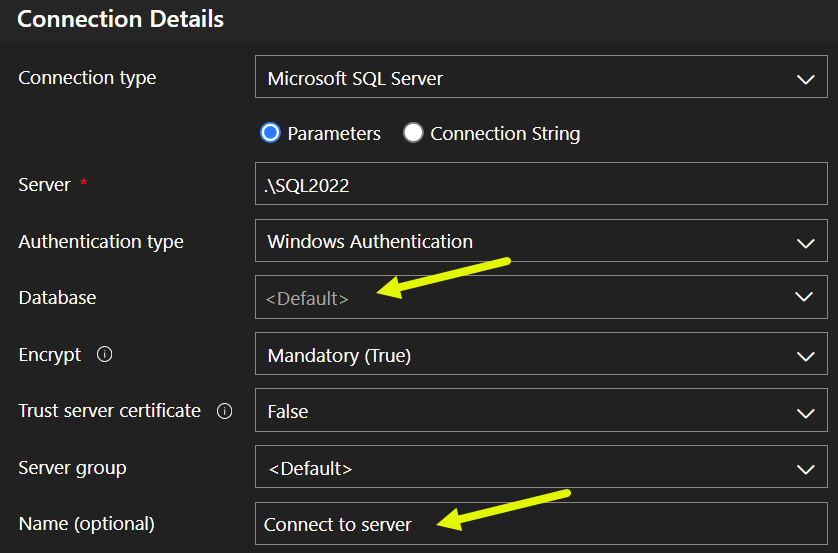 Screenshot of connection configuration for server
Screenshot of connection configuration for server
Note that we named the connection “Connect to server”. Next, we’ll create a connection for a specific database, WideWorldImporters:
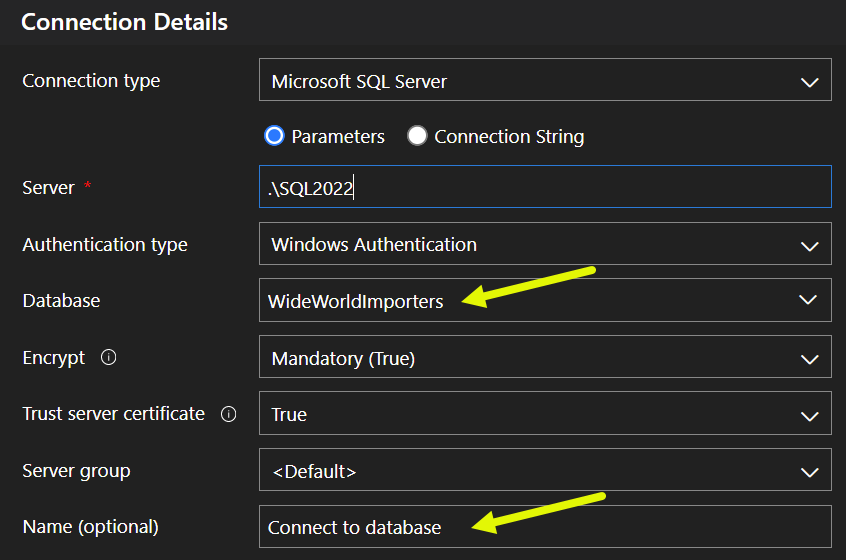 Screenshot of connection configuration for database
Screenshot of connection configuration for database
This connection is named, creatively, “Connect to database.” When we look in the Servers view, we see both connections:
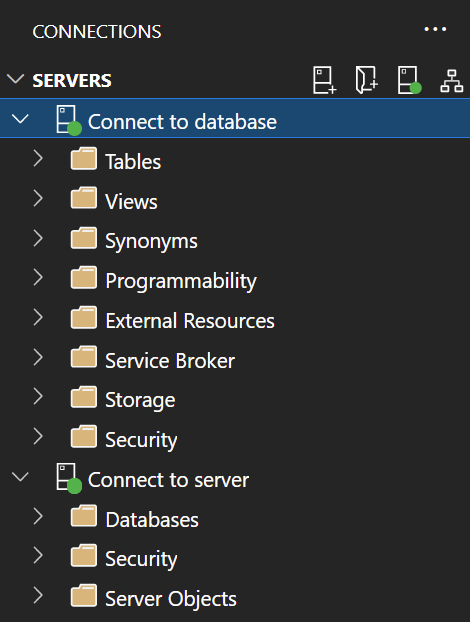 Screenshot of server view with server and database connections
Screenshot of server view with server and database connections
The “Connect to database” connection only shows Tables, Views, etc. in Object Explorer for the WideWorldImporters database, while the “Connect to server” connection shows the Databases node, as well as other server-level nodes, just as you see in SSMS.
Myth #6 The hardcoded 45 second object explorer timeout is a huge pain in my *readacted* and a horrible design choice. No competent engineer would implement something like that for a SQL server interface.
Good news! Thanks to our competent engineers ;) we added the ability to increase that timeout in Azure Data Studio 1.42. Within Settings ( CTRL/CMD + , ) search for expand timeout to see both an Object Explorer timeout setting, as well as one for the Server tree:
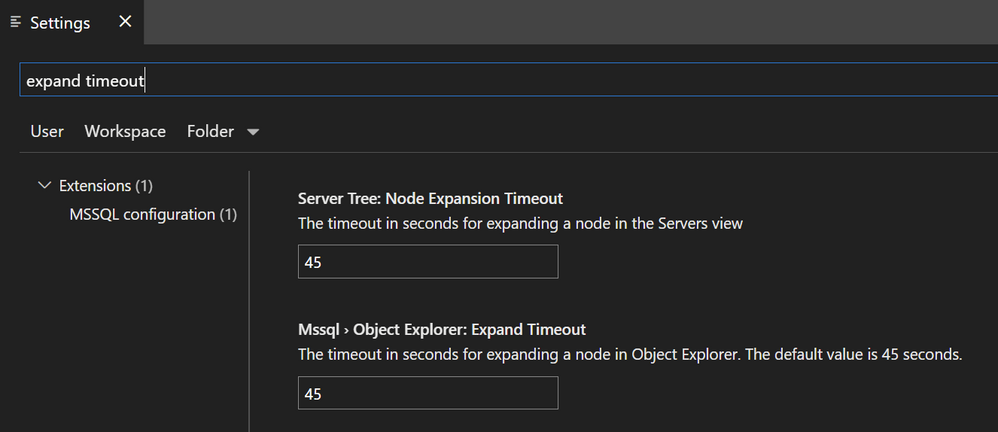 Screenshot of timeout settings
Screenshot of timeout settings
Modify those as needed! There is also a new Command timeout in the Advanced pane of the Connection dialog, just below the Connect timeout.
Myth #7 One of the key tools I still use from the SSMS program that is missing (as far as I can tell) from Azure Data Studio is the ability to use the table designer to modify existing tables.
Table Designer for Azure Data Studio was GA’d in November’s 1.40 release, and an existing table can be modified using Table Designer. Simply right-click on the table and select Design:
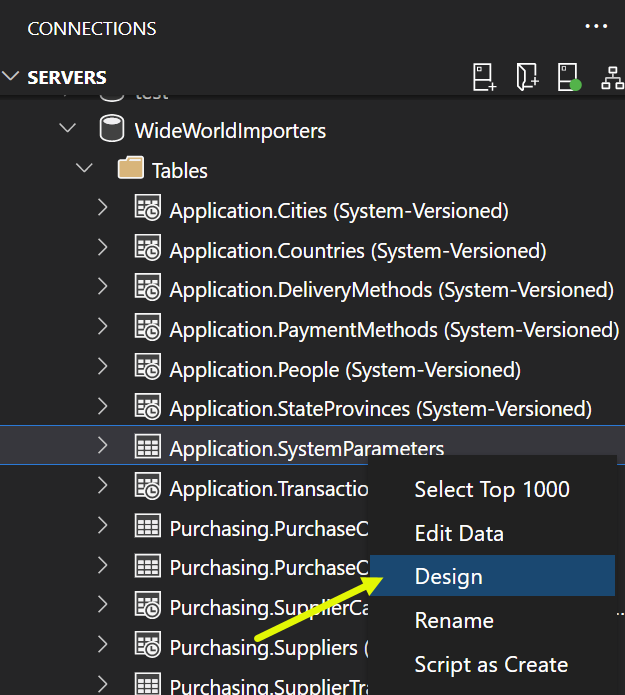 Screenshot of right-click option to modify design of an existing table
Screenshot of right-click option to modify design of an existing table
Table Designer will open, and from there you can add a column, add an index, create a new constraint, and more!
Myth #8 Grouping of schemas has unfortunately still not been implemented, otherwise very modern.
Oh hey, maybe you missed last week’s blog post about ADS 1.42 and the new Group by schema option? It’s here:
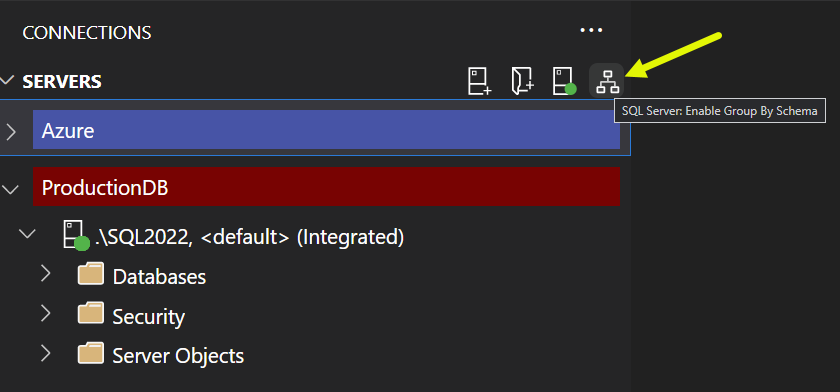 Screenshot of Group By Schema option
Screenshot of Group By Schema option
We could go on, but in the interest of chocolate that may melt soon, we’ll wrap it up. We hope this has been helpful for those of you that use any of the SQL Server tools, and feel free to add a comment below if you know of other myths that need clarification. As any good DBA would say, “Trust, but verify.”

by Contributed | Apr 1, 2023 | Technology
This article is contributed. See the original author and article here.
Azure Database for PostgreSQL – Flexible Server supports over 50 PostgreSQL extensions. We are also constantly adding new extensions to expand on the functionality provided by the PostgreSQL engine. Until now we have not been providing support for the most important extension from the Postgres ecosystem, namely pg_carbonara.
While many developers and DBAs are aware of PostGIS as geo routing extension for Postgres or pg_stat_statements to track slow queries, not many are aware of pg_carbonara, which can be seen as a mandatory extension for a lunch break that allows you to cook a real Italian carbonara. What pg_carbonara does is guide you with step-by-step instructions to cook the dish.

As many of our team members were sceptic to introduce this extension, claiming that most of the developers and DBA’s do not eat, they just drinking coffee all day long, we have conducted a cohort study on a population of 100k developers and found out to our surprise that 95% of participants DO EAT. According to the study result we decided to make pg_carbonara extension a default and preinstalled in all new Flexible Servers. Enjoy!
The following blog post about the pg_carbonara PostgreSQL extension is an April Fool’s Day joke. We apologize for any confusion or misunderstanding that may have resulted from the post.
At Azure Database for PostgreSQL, we are committed to providing accurate and reliable information to our customers. We take any miscommunication very seriously, and we assure you that this was a lighthearted prank that was not intended to mislead or cause any harm.
We appreciate your understanding and hope that you found the post to be a fun and enjoyable way to celebrate April Fool’s Day. As always, please do not hesitate to contact us if you have any questions or concerns.
by Contributed | Mar 31, 2023 | Technology
This article is contributed. See the original author and article here.
Hello everyone,
Today, we’re sharing our March train for feature and breaking changes. We also communicate these changes on release notes and via email. We are continuing to make it easier for our customers to manage lifecycle changes (deprecations, retirements, service breaking changes) within the new Entra admin center as well. In addition, we will be including new feature launch announcements as part of this blog post going forward so you can see both changes to existing features and new features in a single list.
March 2023 change announcements:
Security Improvements
Number Matching Message Center post refresh
Microsoft Authenticator app’s number matching feature has been Generally Available since November 2022. If you haven’t already leveraged the rollout controls (via Azure Portal Admin UX and MSGraph APIs) to smoothly deploy number matching for users of Microsoft Authenticator push notifications, we highly encourage you to do so. We had previously announced that we will remove the admin controls and enforce the number match experience tenant-wide for all users of Microsoft Authenticator push notifications starting February 27, 2023. After listening to customers, we will extend the availability of the rollout controls for a few more weeks. Organizations can continue to use the existing rollout controls until May 8, 2023, to deploy number matching in their organizations. Microsoft services will start enforcing the number matching experience for all users of Microsoft Authenticator push notifications after May 8th, 2023. We’ll also remove the rollout controls for number matching after that date.
If customers don’t enable number match for all Microsoft Authenticator push notifications prior to May 8, 2023, users may experience inconsistent sign ins while the services are rolling out this change. To ensure consistent behavior for all users, we highly recommend you enable number match for Microsoft Authenticator push notifications in advance. Learn more at Number match documentation | Defend your users from MFA fatigue attacks – Microsoft Community Hub | Advanced Microsoft Authenticator security features are now generally available! – Microsoft Community Hub
Azure Multifactor Authentication Server
Beginning September 30, 2024, Azure Multifactor Authentication Server deployments will no longer service multifactor authentication (MFA) requests, which could cause authentications to fail for your organization. To ensure uninterrupted authentication services and to remain in a supported state, organizations should migrate their users’ authentication data to the cloud-based Azure MFA service using the latest Migration Utility included in the most recent Azure MFA Server update. Learn more at Azure MFA Server Migration.
Enabling System-preferred authentication methods
Today, various authentication methods can be chosen by users as their default. However, not all authentication methods provide the same level of security. This situation creates potential risk for organizations when less secure authentication methods are chosen, especially in place of phishing-resistant methods.
To address this, we’re introducing system-preferred authentication for MFA. When enabled, at runtime the most secure authentication method of the user’s registered methods will be requested as the second factor of authentication. This replaces the previous feature, where the user selects a ‘default’ method and is therefore always prompted for that method first, even when more secure methods are registered and available. This functionality is available today using MSGraph API. Once enabled, users will be prompted to sign in using the most preferred authentication method available. Learn more at System-preferred multifactor authentication (MFA) – Azure Active Directory – Microsoft Entra | Microsoft Learn.
Deprecation of ‘Require approved client app’ Conditional Access Grant
On March 31, 2026, the Require approved client app control in Azure Active Directory (Azure AD) Conditional Access will be retired and no longer enforced. Before that date, you’ll need to transition and start using the Require app protection policy control. We encourage you to make the switch sooner to gain the richer benefits of the Require app protection policy control, which has all the same capabilities, plus:
- It verifies the corresponding Intune policy.
- It’s applied before a user is granted access.
- It has a strengthened security posture.
To avoid any disruptions in service, transition to using the ‘Require app protection policy’ control in Azure AD Conditional Access by March 31, 2026. If you have questions, get answers from community experts in Microsoft Q&A.
Retirement of managing authentication methods in legacy Multifactor Authentication (MFA) & Self-Service Password Reset (SSPR) policy
Beginning September 30, 2024, we will no longer allow authentication methods to be managed in the legacy MFA and SSPR policies. Organizations should migrate their methods to the converged authentication methods policy where methods can be managed centrally for all authentication scenarios including passwordless, multi-factor authentication and self-service password reset. Learn more at Manage authentication methods for Azure AD.
IPv6 coming to Azure AD
Earlier we announced our plan to bring IPv6 support to Microsoft Azure AD enabling our customers to reach the Azure AD services over IPv4, IPv6, or dual stack endpoints. This is just a reminder that we’ll begin introducing IPv6 support into Azure AD services in a phased approach, starting March 31st, 2023.
If your networks don’t support IPv6, you don’t need to take any action to change your configurations or policies. For most customers, IPv4 won’t completely disappear from their digital landscape, so we aren’t planning to require IPv6 or to deprioritize IPv4 in any Azure AD features or services. We will continue to share additional guidance on IPv6 enablement in Azure AD at this easy to remember link https://aka.ms/azureadipv6.
User Experience Improvements
Modernizing Terms of Use Experiences
Starting July 2023, we’re modernizing the following Terms of Use end user experiences with an updated PDF viewer and moving the experiences from https://account.activedirectory.windowsazure.com to https://myaccount.microsoft.com:
- View previously accepted terms of use
- Accept or decline terms of use as part of the sign-in flow
No functionalities will be removed. The new PDF viewer adds functionality and the limited visual changes in the end-user experiences will be communicated in a future update. If your organization has allow-listed only certain domains, you must ensure your allow-list includes the domains ‘myaccount.microsoft.com’ and ‘*.myaccount.microsoft.com’ for Terms of Use to continue working as expected. For additional information visit https://aka.ms/touuiupdate
Improved My Groups Experience
A new and improved My Groups experience is now available at myaccount.microsoft.com/groups and in May 2023, the old experience will be deprecated. The previous URL (mygroups.microsoft.com) will redirect users to the new experience at myaccount.microsoft.com/groups.
My Groups enables end users to easily manage groups, such as finding groups to join, managing groups they own, and managing existing group memberships. Based on customer feedback, we’ve also added:
- Sorting and filtering on lists of groups and group members
- A full list of group members in large groups, and
- An actionable overview page for membership requests
Today, end users can get the richer benefits of the new My Groups by proactively switching to myaccount.microsoft.com/groups. Navigation between the old and new experiences is available via notification banners on each site.
Note: the ‘Self Service Group Management’ admin controls will no longer be available for the new My Groups and will be deprecated in May 2023. Admins can no longer restrict owners or users from accessing or using My Groups. Admins can still manage end users’ ability to create M365 and Security groups using the settings described here.
This change will automatically occur for all customers and there are no actions that need to be taken. Learn more at Update your Groups info in the My Apps portal – Microsoft Support.
My Apps Portal Improvements
If your organization uses myapps.microsoft.com to discover and launch apps, and has set up an allow-list for only specific certificates and/or domains, you’ll need to update your allow-list in order for app launching to continue working as expected. We’ve introduced a new endpoint to launch apps for better performance and resilience. App launch requests will go to a new domain: launcher.myapps.microsoft.com.
If you use myapps.microsoft.com/signin or account.activedirectory.windowsazure.com/applications/signin deep links and have allow-listed only certain certificates, you will need to update your allow-list to include certificates from myapplications.microsoft.com. If you have allow-listed only specific domains or IPs, you will need to update the allow-list to include launcher.myapps.microsoft.com. Please ensure to update your allow-list latest by June 30, 2023 for My Apps portal to continue working as expected.
To easily check if you need to update your certificate allow-list, go to https://myapplications.microsoft.com. If it loads as expected, no update is needed. If you encounter an issue, you’ll need to make an update.
Whichever method you used to allow-list the My Apps certificate in the past, you should use the same method to allow-list the new one coming from My Apps. Retrieving the My Apps certificate that you need to allow-list will vary depending on the browser you’re using. On Edge, select the lock icon in the URL bar, to the left of the URL. Then select the option that says “Connection is secure” from the dropdown. In the “Connection is secure” details, select the certificate icon which will open the Certificate viewer containing the details of the certificate. For additional information visit: Office 365 URLs and IP address ranges – Microsoft 365 Enterprise | Microsoft Learn
My Apps Secure Sign In Extension
Beginning May 2023, the My Apps Secure Sign In Extension will receive an update to align with Chromium’s new Manifest Version 3 format. Some features that use this extension will experience updates, but no action is needed at this time. These updates are:
- The optional experience One-click app configuration of SAML single sign-on, which was available for select SAML apps from the Azure Marketplace or Azure AD application gallery, will be retired in May 2023. All applications that were previously configured using this feature will continue to work as expected, and no action is needed at this time.
- My Apps app search behavior will now search across all apps in MyApps and has new launching behavior. When you enter a search term, the My Apps portal will now open in a new tab with your query applied to your list of apps. You can then launch apps from the search results. There will no longer be a “Recently Used” section in the extension user experience.
- App Proxy link translation feature will now use dynamic and session-scoped rules. This introduces a new limit of 2250 unique link translations per tenant.
Please ensure you are using the most recent version of the Edge Add-on or Chrome extension. Please note, support for the Firefox version of this extension ended in September 2021.
Azure AD Admin Center will redirect to Microsoft Entra Admin Center
Beginning April 1, 2023, Azure AD Admin Center (https://aad.portal.azure.com) will redirect to Microsoft Entra Admin Center (https://entra.microsoft.com). You will still be able to complete all your Azure AD management tasks from within the new admin center. To ensure uninterrupted access to the management experience, organizations should update their firewall rules.
Will I still be able to access my Azure AD admin portal after April 1st, 2023?
Learn more at New Admin Center Unifies Azure AD with Other Identity and Access Products – Microsoft Community Hub | Microsoft Entra documentation | Microsoft Learn
Developer Experience Improvements
Azure AD Graph API
We want to reiterate our commitment to ensuring a smooth transition for our customers from Azure AD Graph to Microsoft Graph. As previously announced, Azure AD Graph will remain available until June 30, 2023. While we reserve the right to retire it at any time after June 2023, we will continue to monitor usage and provide ample time for customers to migrate off the APIs before retiring it. In the meantime, we will continue to offer support for Azure AD Graph with security-related fixes, and we discourage taking production dependencies on Azure AD Graph. All new features and functionalities will only be made in Microsoft Graph. We encourage all customers to prioritize migration to Microsoft Graph. Learn more at Migrate Azure AD Graph apps to Microsoft Graph – Microsoft Graph | Microsoft Docs.
PowerShell Deprecation
As we approach the end of the support period for the three PowerShell Modules – Azure AD, Azure AD Preview, and MSOnline – we want to remind you that the planned deprecation date is June 30th, 2023. Depending on the status of Azure AD API, some cmdlets might stop working after June 30th, 2023. We will continue to check usage and provide time for customers to migrate off the three PowerShell modules before retiring them. We will not retire an API/cmdlet unless we have feature parity for that API in Microsoft Graph.
Until we retire, we will continue to support security-related updates. We encourage you to continue migrating to the Microsoft Graph PowerShell SDK, which still is the focus of all our current and future PowerShell investments.
Learn more at Migrate from Azure AD PowerShell to the Microsoft Graph PowerShell SDK documentation.
Licensing Assignment API/PowerShell Retirement
We want to remind you that the planned retirement date for the Azure AD Graph and MSOnline PowerShell licensing assignment APIs and PowerShell cmdlets for existing tenants is March 31, 2023. APIs and cmdlets will not work for new tenants created after November 1, 2022.
We recommend prioritizing migration to MS Graph following the guidance in Migrate your apps to access the license managements APIs from Microsoft Graph – Microsoft Community Hub and in Find Azure AD and MSOnline cmdlets in Microsoft Graph PowerShell | Microsoft Docs.
Communication Schedule
Below is a quick snapshot of our communication schedule.
Category
|
Definition
|
Communication schedule
|
Retirement announcement
|
Signals the retirement of a feature, capability, or product in a specified period.
Typically, at this point, new customers are not permitted to adopt the service/feature, and engineering investments are reduced for the specified feature.
Later, the feature will no longer be available to any customer as it reaches the “end-of-life” state.
|
Twice per year
(March and September)
|
Breaking change announcement, feature change announcement
|
Breaking change: Expected to break the customer/partner experience if the customer doesn’t act or make a change in their workload for continued operation.
Feature change: Change to an existing Identity feature that doesn’t require customer action but is noticeable to the customer. These are typically UI/UX changes.
These changes generally happen more often and require a more frequent communication schedule.
|
Four times per year (March, June, September, and November)
|
Follow ongoing monthly updates on our release notes page: What’s new? Release notes – Azure Active Directory – Microsoft Entra | Microsoft Docs.
As always, we’d love to hear your feedback or suggestions. Let us know what you think in the comments below or on the Azure AD feedback forum. You may also send your questions, open issues, and feature requests through Microsoft Q&A by using the tag #AzureADChangeManagementMar2023Train.
Learn more about Microsoft Entra:




Recent Comments